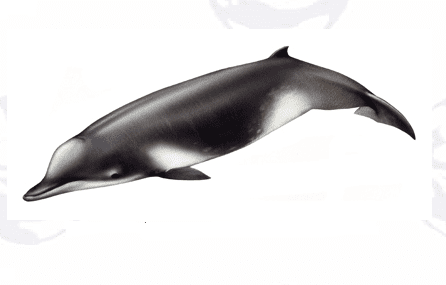Tasmacetus shepherdi
IUCN
LCBasic Information
Scientific classification
- name:Tasmacetus shepherdi
- Scientific Name:Shea's beaked whale, Tasman's whale, Tasman's beaked whale
- Outline:Cetacea
- Family:D.whale
Vital signs
- length:No verification information
- Weight:2-3 tons
- lifetime:No verification information
Feature
Distribution and Habitat
The Shetland's beaked whale is generally considered to be an ocean-going whale, probably distributed circum-Antarctic in the cold temperate waters of the Southern Hemisphere. Known stranding records include New Zealand (12), Australia (1), Argentina (3), the Juan Fernández Islands (2), and the South Sandwich Islands (3). There have been no reports of strandings north of 30 degrees south latitude. There are only two more reliable sightings, one in New Zealand and the other in the Seychelles.
Appearance
The body of the Shetland's beaked whale is cigar-shaped, similar to that of the Mesocephalus, but the mesocephalus is more prominent and close to that of the Cuvier's beaked whale, but not as steep as that of the bottlenose whale and the calvaria. The beak and forehead are clearly demarcated, and it is slender and narrower than other beaked whales. The pectoral fins are quite short and gradually taper towards the end. Like most beaked whales, the curvature and ulna are relatively long and the phalanges are short. The dorsal fin is about 30 to 35 cm high, roughly sickle-shaped, and located at the rear of the back, which is equivalent to 2/3 of the total length. The caudal fin is not concave, and there is a pair of shallow grooves on the neck. They are a very special species among beaked whales. Generally speaking, only adult male beaked whales have two huge teeth that are not very helpful for hunting, and they are only located in the lower jaw; however, both males and females
Details
Shepherd's beaked whale, scientific name Tasmacetus shepherdi, foreign name Shepherd's Beaked Whale, is a little-known cetacean, with only about 20 stranding incidents and a few possible sightings. Increasing research in the Southern Hemisphere may find more specimens, but the evidence shows that the number seems to be very small.

Nothing is known about the social structure of Shetland's beaked whales. Rare surface sightings have found that they only appear in small groups and are difficult to detect and track. It may be that the population is very small, or they often avoid ships, dive very deep and rarely surface.
Although it is generally believed that Shetzel's beaked whales, like other beaked whales, mainly feed on squid, fish seem to account for an equal or even greater proportion of their diet than squid. In a few cases, fish such as hake were found in stomach contents, as well as a small amount of crab and squid beak residue. In Argentina, a stranded female whale was dissected and found to have only fish remains in its stomach.
The number of Shetzel's beaked whales is completely unknown, and there is no clear information on whether they have been hunted or killed by fisheries.
Protect wildlife and eliminate game.
Maintaining ecological balance is everyone's responsibility!








